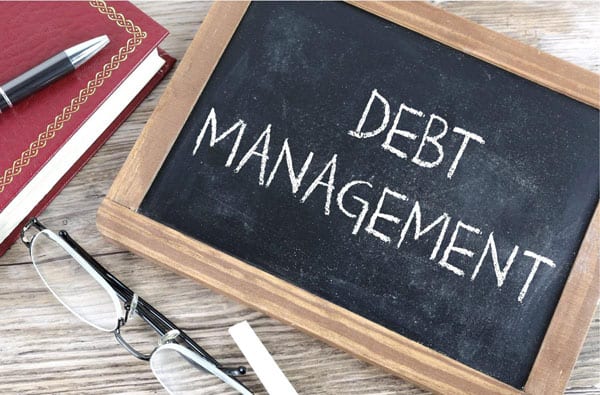What Does Financial Planning Do? A Complete, Practical Guide You’ll Actually Use In Your Financial Goals
- Key Takeaways
- What Does Financial Planning Do—In Plain English
- Cash Flow Without the Guilt Trip
- Emergency Funds: Boring, Vital, and Weirdly Freeing
- Debt Strategy Without the Shame Spiral
- Investing: Matching Money to Time (and Sanity)
- Retirement Financial Planning: The Long Game, With Guardrails
- Taxes: Quiet Wins That Compound
- Insurance and Risk: Guardrails You Hope You’ll Never Need
- Estate Planning: Control, Clarity, and Kindness
- The Psychology Edge: Why a Written Plan Boosts Confidence in Financial Planning
- Real Life: What Does Financial Planning Do In Practice?
- Financial Planning Do’s and Don’ts (The Human Version)
- What Does Financial Planning Do During Market Volatility?
- DIY or Financial Advisor? Choosing the Right Level of Help for Investment Advice
- A Simple Way to Start Today on Your Financial Planning
- A Quick Word on Research (Without Killing the Vibe)
- Frequently Asked Questions
- The Bottom Line: What Does Financial Planning Do?
What does financial planning do? It turns money goals into a written, step-by-step roadmap—budgeting, investing, taxes, insurance, and retirement working together.
Key Takeaways
- Financial planning turns vague intentions or financial goals into clear actions with timelines, making your next money move obvious instead of overwhelming.
- Confidence jumps with a written plan; people with documented plans report far higher confidence and follow-through.
- It covers cash flow, saving, investing, retirement financial planning, tax strategies, insurance protection, and estate documents—so all the pieces work together.
- It improves behavior by building automatic systems, regular reviews, and practical “do this next” steps you can stick with.
- It’s an ongoing practice that adapts to job changes, market swings, and life curveballs—because stability is built, not wished for.

So there I was—2:47 a.m., stone-cold coffee to my left, my bank app to my right—waiting for my checking account to whisper the secrets of adulthood. It didn’t. (Rude.) What I did get, after a little panic and a lot of scribbling, was the question that started turning things around: what does financial planning do, really?
Here’s the answer I wish someone had taped to my fridge: it makes the next step obvious. Not perfect. Not algorithmically optimized. Just obvious. The second your next step is obvious, the stress drops. Momentum shows up. And you don’t have to become a different person to make progress.
In this guide, we’ll keep it real and practical. We’ll cover what financial planning actually does (in plain English), how it works across cash flow, emergency funds, debt, investing, retirement financial planning, taxes, insurance, estate documents, and—maybe most importantly—habits. We’ll talk about market turbulence, whether you should DIY or bring in a pro financial planner, and how to get started today without turning your life into a spreadsheet cosplay. I’ll cite a couple of credible sources—but I promise, no academic tone. This isn’t a textbook. It’s your life and this sound financial plan is for you.
What Does Financial Planning Do—In Plain English
Financial planning turns three inputs into a clear path you can follow: where you are, where you want to go, and how you prefer to operate. That’s it. The magic is in the conversion.
- You capture a snapshot of your financial life—income, expenses, debts, savings, insurance coverage, current investments, and tax situation.
- You translate fuzzy hopes into measurable goals with dates—“$50,000 down payment by June 2027” instead of “buy a house someday.”
- You pick a rhythm you’ll stick with—automated savings, scheduled check-ins, a contribution plan that grows with your pay, and a portfolio that matches your timeline.
Then the plan handles the boring-but-powerful stuff: assigning jobs to your dollars before they wander off; matching investments to time horizons so you aren’t risking rent money; preparing for surprises so one emergency doesn’t erase a year of progress; and scheduling reviews so you adjust with intention, not panic. Think of it like GPS. You still drive. You just don’t have to memorize every turn from here to retirement.
Cash Flow Without the Guilt Trip
Let’s start where money actually lives—day-to-day. What does financial planning do with your cash flow? It gives every dollar a job before it disappears. You’ll track reality for 30–60 days (no shame, just data), then create a structure that fits your life. The classic 50/30/20 (needs/wants/saving and debt) is fine. But real life—rent, loans, kids, caring for parents—often needs a custom split. That’s not failure; that’s planning.
The single highest-leverage move here is automation. On payday, transfers happen: a slice to savings, retirement contributions, bills queued up (and did I mention credit card debt?). Then the rest is guilt-free spending. Without automation, every month becomes a negotiation with your future self—and future-you is a terrible negotiator at 9 p.m. in front of a takeout menu.
My first real “trim” found three zombie subscriptions—$42 a month, gone for who-knows-how-long. I used it to cover my internet bill one month and bump my Roth IRA contribution the next. Not life-changing. But it was an early, tangible win. Enough of those and your trajectory tilts.
Two quick tricks and specific advice that change the tone:
- Label your wants. I split mine into “fun now” and “fun later” (vacations). That one naming tweak made me respect both.
- Do a 15-minute weekly check. I call it Money Monday. You glance at accounts, confirm transfers, and catch weird charges. Low effort, high awareness.
Emergency Funds: Boring, Vital, and Weirdly Freeing
The emergency fund is the least dramatic protagonist in this story and maybe the most important. It turns bad days into manageable days. Start small on purpose: $500. Then $1,000. Then one month of expenses. Keep building toward 3–6 months (6–12 if your income is variable). Yes, the interest rate matters—but not as much as having it ready when your car makes a new sound that seems legally actionable.
Keep it simple. High-yield savings. Quick access. Named clearly (“Emergency—Do Not Touch”) so you don’t accidentally use it for concert tickets because, listen, that tour is once-in-a-decade. So are certain repair bills. And trust me, you don’t want your future needs to haunt you just because you chose to be in that crowded arena on one Saturday night.
Debt Strategy Without the Shame Spiral
Debt isn’t a moral failing; it’s a math problem dressed as a soap opera. A plan to manage income finances solves it without theatrics. You’ll target high-interest debt while still capturing long-term wins like an employer 401(k) match. That match is literally free money. We don’t say no to free money or enough money.
Choose your payoff approach:
- Avalanche: Attack the highest interest rate first. It’s mathematically fastest, saving you the most in interest and improving your current financial situation even just a little.
- Snowball: Attack the smallest balance first. It’s psychologically satisfying, giving you quick wins and eventually help you with your long term financial goals.
Which is “right”? Whichever one you’ll actually follow. One rule smooths the path: no new balances, except for true emergencies or medically necessary expenses. That boundary alone can stop a slow leak from becoming a blowout.
I’ve walked this with people who made under $50k and people who made over $200k. The interesting part? Income helps. Structure wins. The households that implement a plan—automated payments, review dates, clear rules—outperform those with higher income and no plan. Every time.
Investing: Matching Money to Time (and Sanity)

Now, what does financial planning do once you get beyond cash flow? It makes investing make sense. The most useful concept here is buckets.
- Short-term goals (0–3 years): keep it safe. High-yield savings or money market funds. Return is less important than principal protection.
- Medium-term goals (3–10 years): balanced. Some growth, some stability. A mix of stock and bond exposure reduces volatility.
- Long-term goals (10+ years): growth-oriented. Broad stock exposure, globally diversified, with bonds to dampen the ride.
Diversification isn’t a buzzword; it’s not betting the farm on one sector, one country, or one cousin’s blockchain pitch. It’s owning a range of assets so you’re not at the mercy of any single story. Then you rebalance annually to keep your risk level on target. Nothing fancy. Just a rule you follow while everyone else refreshes financial Twitter for hot takes.
Automate contributions. Invest on the same day each month. That regularity removes the “should I wait?” spiral and gives you dollar-cost averaging without any hand-wringing. And please—avoid the “I’ll just wait for the market to calm down” trap. It often stays loud while your cash quietly loses purchasing power to inflation.
Retirement Financial Planning: The Long Game, With Guardrails
Retirement isn’t a birthday party; it’s a math problem with a lot of feelings attached. Here’s how planning gets you there without needing a crystal ball.
First, target the lifestyle number: how much will you spend each year in retirement (in today’s dollars)? Multiply that by roughly 25–28 to eyeball a nest egg size that supports a 4%–3.6% withdrawal rate. It’s a starting point you’ll refine.
Next, structure your accounts or account types:
- Employer plan (401(k), 403(b), etc.): contribute at least to the match first. That’s mandatory.
- IRAs: Roth if you expect a higher tax rate later; traditional if you expect a lower one later.
- Taxable account: great for flexibility, early retirement bridges, and goals before 59½.
- HSAs (if eligible): the stealth retirement account—pre-tax in, tax-free growth, tax-free out for qualified medical costs.
Then, strategy. Social Security timing can be surprisingly consequential. Many households benefit from delaying (especially the higher earner) to age 70 to maximize lifetime benefits. Withdrawal order matters too. A tax-aware sequence—coordinating Roth, traditional, and taxable—can stretch savings more than stock-picking ever will.
Vanguard’s “Advisor’s Alpha” concept estimates that behaviors like rebalancing, cost control, tax efficiency, and simple coaching (a.k.a., “Don’t sell everything in a panic”) can add roughly 3% in net returns annually over time. Not because you picked a unicorn stock—but because you didn’t sabotage your plan when the market got choppy.
Taxes: Quiet Wins That Compound
Breathe. You don’t have to become a CPA to do this well. What does financial planning do with taxes? It aligns your choices so you don’t accidentally tip the scales against yourself.
- Right-size your withholding: huge refunds are fun; steady cash flow is smarter. Put that money to work all year instead of giving the government a free loan.
- Balance Roth vs. traditional contributions: if you expect your future tax rate to be higher, favor Roth now; if lower, traditional can be efficient.
- Tax-loss harvesting (in taxable accounts): strategically realize losses to offset gains, while minding wash-sale rules.
- Know your legitimate deductions/credits: education benefits, child tax credits, energy-efficient home improvements, charitable giving. Nothing shady—just the incentives that exist for a reason.
A tax-aware plan often buys you literal years of retirement flexibility. It’s not dramatic in the moment. It adds up behind the scenes.
Insurance and Risk: Guardrails You Hope You’ll Never Need

I get it. Insurance isn’t thrilling. But a single uninsured event can brute-force its way through five years of progress. So what does financial planning do here? It helps you choose protections with intent.
Life insurance: term policies usually make the most sense for families—more coverage during your most vulnerable years (mortgage, kids, one main earner) for less cost. Matching coverage to actual needs is better than guessing.
Disability insurance: protects your ability to earn—which, if you think about it, is your biggest asset. Own-occupation coverage can be worth a look, especially in specialized fields.
Health, home, renters, auto: set deductibles and coverage limits on purpose. You’re not trying to win a game. You’re trying to avoid losing one you don’t need to play.
Umbrella policy: once your assets and income grow, a personal liability umbrella policy is surprisingly affordable for the amount of coverage it provides. It’s a “sleep-better” policy.
Estate Planning: Control, Clarity, and Kindness
Even a modest estate benefits from basic documents. No, it’s not just for people with monogrammed hand towels and vintage wine collections. A simple estate plan says “I care about you” in extremely practical terms.
The essentials:
- A will that reflects your wishes.
- Updated beneficiary designations on retirement accounts and insurance (these often override wills—keep them current).
- Durable power of attorney (financial) and healthcare proxy so someone you trust can act if you can’t.
- An advance directive that gives guidance on care decisions.
Trusts can help if you have minor children, want privacy, have complex distribution preferences, or need to protect beneficiaries. But even without a trust, those core documents make a huge difference. Pro tip from experience: tell someone where the documents live. And include a simple “where things are” list—accounts, passwords (stored securely), contacts. It’s not morbid; it’s kind.
The Psychology Edge: Why a Written Plan Boosts Confidence in Financial Planning
True story: a lot of money stress has less to do with lack of dollars and more to do with lack of clarity. A written plan shrinks the fog. You know what to do next. You can see the staircase instead of staring into the dark.
The CFP Board has reported that people with written financial plans feel substantially more confident about reaching their goals than those without a plan. That tracks with what I’ve seen over and over: the moment someone goes from “I hope it’s enough” to “I’m saving 10% now, bumping to 12% by Q4, rebalancing in March” is the moment their shoulders drop. They’re still doing the work. But the guessing is gone.
I like one-sentence plans as a check: “I’m funding my emergency buffer, paying down Card X using avalanche, investing monthly in a diversified portfolio, and reviewing quarterly.” You can elaborate underneath. But that one sentence should be true.
Real Life: What Does Financial Planning Do In Practice?
Let’s get specific.
You want a $50,000 down payment by June 2027. The plan: automate $1,200/month to a high-yield savings account, allocate a set percentage of any bonus, and skim 5–10% off any unexpected windfalls. Add a rule you’ll actually follow: 70% of surprise money goes to the goal, 30% to joy. That 30% matters—you’re not a robot, and burnout is expensive.
You’re tackling $25,000 in credit cards. The plan: avalanche method with automatic payments every payday, plus a $200/month drip to your emergency fund until it hits $1,000. That buffer is what stops one car repair from sucking you right back into debt.
You’re 42, late to the party (welcome, it’s fine). The plan: consolidate old 401(k)s into an IRA you’ll actually watch, boost current 401(k) to capture the full match, open a Roth IRA if eligible, set a 70/30 stock/bond mix you can sleep with, and schedule a yearly rebalance. Turn on a 1% automatic contribution increase each year. Future you will send you a very nice thank-you card.
I’ve seen versions of these plans succeed across wildly different incomes. Again: the structure is the secret sauce. The plan makes it easier to keep going than to stop.
Financial Planning Do’s and Don’ts (The Human Version)
I try to avoid rigid rulebooks—life has enough of those—but a few principles save a lot of headaches.
Do write it down. If it isn’t written, it’s a wish. Notes app counts. Do automate your good behavior. Transfers, contributions, bill pay—set them and let them run. Do review annually at minimum. Tie it to your birthday or the first week of the new year if that helps. Adjust, don’t overreact. Do keep the emergency fund liquid. It’s not an investment; it’s a safety feature. Do diversify and keep costs low. You’ll never be mad at a low-fee index fund that compounded for 20 years. Do use tax-advantaged accounts. Match money, HSA triple-tax advantages, Roth flexibility—take the wins the system offers.
Don’t wait for “perfect.” Start small and make the plan better as you go. Don’t park long-term money in checking out of fear. After your buffer, invest for growth. Don’t chase hot tips. If it sounds like a shortcut, it’s probably a detour with tolls. Don’t neglect insurance. One uninsured event can erase half a decade. Don’t forget your beneficiaries. An out-of-date designation will undo your best intentions.
What Does Financial Planning Do During Market Volatility?
It keeps you from turning a bad market week into a bad life decision. Your short-term bucket is safe, so you’re not forced to sell stocks at the worst time. Your long-term bucket is built for storms, so you don’t abandon ship. Your rebalancing rule quietly buys low and sells high without the drama.
J.P. Morgan’s Guide to the Markets has illustrated a consistent point for years: missing just a handful of the market’s best days can devastate long-term returns—and those “best days” often sit right next to the worst ones. Translation: timing your exits and entries is a great way to lock in regrets. A plan keeps you invested according to purpose, not panic.
DIY or Financial Advisor? Choosing the Right Level of Help for Investment Advice
You can absolutely DIY this if:
- You’re comfortable with a simple, diversified portfolio (a target-date fund or a three-fund portfolio can get you 80% of the way there).
- You’ll automate contributions and commit to an annual review and rebalance.
- You can resist performance-chasing and doom-scroll-induced panic.
Consider a fiduciary, fee-only advisor if:
- You have complex taxes, equity compensation, a business, multiple competing goals, or you’re making big decisions about Social Security and Medicare.
- You want a real person to sanity-check your plan and keep you from self-sabotage during chaotic markets.
- You value time leverage—outsourcing a chunk of complexity so you can live your life.
Ask the right questions: Are you a fiduciary at all times? How are you paid (flat fee, hourly, AUM)? What exactly is included? How do you measure success with clients? Get that fiduciary duty in writing. You want advice that sits on your side of the table.
A Simple Way to Start Today on Your Financial Planning
I’m a fan of frictionless beginnings. Here’s a minimal sequence that works:
- Write down three measurable goals with dates. Example: “$3,000 emergency buffer by December 31,” “Increase 401(k) to 10% by Q2,” “Pay off Card X by next August.”
- Automate one small transfer on payday. Even $100 matters. Momentum beats motivation.
- Schedule one 60-minute review next quarter. Check progress, fix frictions, rebalance if needed, update targets.
- Update your beneficiary list today. It takes ten minutes and saves your family months of headaches later.
If you like apps, use one you’ll actually open. If you like paper, use paper. The tool matters less than your willingness to touch it weekly for five minutes and quarterly for one hour.
A Quick Word on Research (Without Killing the Vibe)
I like mixing stories with data. The CFP Board has reported that people with written financial plans are significantly more confident and more likely to exhibit positive financial behaviors than those without plans. Vanguard’s “Advisor’s Alpha” puts numbers to the value of process—rebalancing, cost control, tax-aware strategies, and behavioral coaching—estimating roughly a 3% annual lift over time. Morningstar’s work on safe withdrawal rates shows that flexibility—trimming withdrawals after bad years, for example—materially increases the odds your money lasts. And J.P. Morgan’s “best days” analysis does a tidy job explaining why staying invested according to plan beats market-timing bravado. None of this replaces your judgment. It supports it.
Frequently Asked Questions
How much money do I need to start?
Less than you think. Start with a $500 emergency buffer. Capture any employer match—it’s the easiest return you’ll ever earn. Automate a modest transfer—$100 to $300—to savings or an IRA. The secret isn’t the number; it’s the system that keeps going when you’re tired.
What’s the difference between a budget and a plan?
A budget tells you where your money went this month. A plan tells your money where to go next month—and next year. Budgeting is one tool inside the bigger engine that includes investing, retirement financial planning, insurance, taxes, and estate documents. The plan makes the budget meaningful.
How often should I review my plan?
Annually at minimum. Add a review after major life events—a new job, a move, a baby, a marriage, a divorce, a big income change. As you approach retirement, semiannual or quarterly check-ins can help fine-tune withdrawals and healthcare decisions. Reviews aren’t about fussing; they’re about staying aligned.
Can a plan help me with my financial goals, especially if I’m in debt?
Absolutely. A plan sequences debt payoff (usually high-interest first), preserves essential savings so one surprise doesn’t erase your progress, and sets up guardrails so balances don’t creep back. You’ll balance payoff and saving so you don’t outrun your safety net.
What if my goals change?
They will. Good plans flex. Update milestones, reallocate contributions, shift timelines, and keep the long-term direction steady. The framework exists to serve your life—not the other way around.
Do I need an advisor, or can I DIY?
Both paths work. If your situation is straightforward and you’ll automate and review on schedule, DIY can be fantastic. If you have equity comp, complex taxes, multiple priorities, or you simply want an accountability partner who keeps you calm in noisy markets, a fiduciary, fee-only planner can be worth it. Think of it as paying for clarity and time.
What does financial planning do during inflation or a recession?
It helps you adjust without overreacting. You may increase cash buffers, trim discretionary spending, or tilt new contributions slightly more defensive while keeping your long-term allocation intact. You’ll revisit tax strategies (loss harvesting can be useful) and confirm your emergency fund is strong. Stability first; tinkering second.
How do I pick investments without getting a finance degree?
Use a target-date fund aligned to your expected retirement year, or build a three-fund portfolio (total U.S. stock, total international stock, total U.S. bond). Keep fees low. Rebalance annually. Automate contributions. Then go live your life.
What are the most common mistakes you see?
Parking too much in cash long-term out of fear; ignoring fees; chasing hot tips; not insuring real risks; failing to update beneficiaries; and letting small frictions (like clunky transfers) slow everything down. The fix is almost always a little structure and a lot of consistency.
The Bottom Line: What Does Financial Planning Do?
What does financial planning do? It translates “I hope this works out” into “here’s what I’m doing next.” It turns fuzzy goals into written, measurable targets with dates. It pairs those targets with systems—automation, diversification, tax awareness, insurance—so progress continues even on your busiest weeks. It gives you enough clarity to make decisions without second-guessing everything. And it adapts as your life changes, because that’s what good plans do.
You don’t need a windfall to begin. You need a notepad (or a notes app), a few honest numbers, and one small automated transfer. Write three goals. Automate one step. Put an annual review on the calendar. That’s your first mile marker.
If you’ve ever wondered “what does financial planning do” beyond budgeting, here’s the answer that actually helps: it makes your money support your life on purpose. Not perfectly. Not instantly. But reliably, steadily, and with far fewer 2:47 a.m. spirals.
Future you is already grateful—and, if I had to guess, better rested.







